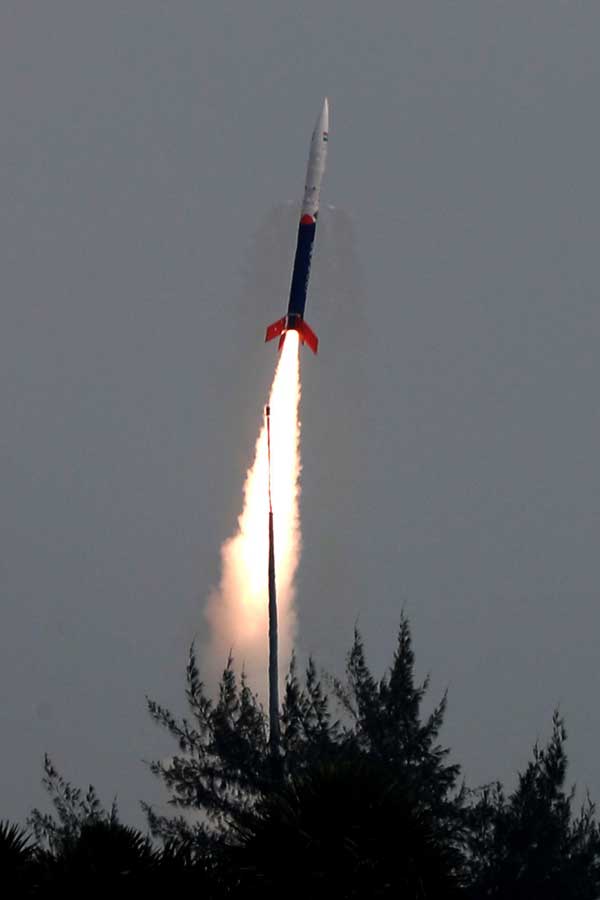
Skyroot Launches First Private Indian Rocket (Image Credit: Payload)

Skyroot Aerospace made history on Friday when it became the first private Indian company to launch a rocket. The company reported that its suborbital Vikram-S rocket reached an altitude of 89.5 miles (55.6 miles) during its maiden launch.
“Vikram-S rocket meets all flight parameters. It’s history in the making for India,” the company tweeted.

The 8-meter (26.2 ft) tall Vikram-S rocket is designed to launch payloads weighing 83 kg (183 lb) to an altitude of 100 km (62.1 miles).
Vikram-S is the first in a family of launchers that Skyroot is developing. Vikram boosters will launch payloads ranging from 225 kg (496 lbs) to 720 kg depending upon the rocket used and the orbit desired. Vikram launch vehicle specifications follow.
Vikram I
- 225 kg (496 lbs) to 500 km (311 mile) sun synchronous polar orbit (SSPO)
- 315 kg (694 lb) to 45º inclination 500 km (311 mile) low Earth orbit (LEO)
- Highly reliable solid propulsion stages with proven design heritage.
- Orbital Adjustment Module with re-start capability enables multi-orbit insertions.
- Requires minimal range infrastructure. Can be assembled and launched within 24 hours from any launch site.

Vikram II
- 410 kg (904 lb) to 500 km (311 mile) SSPO
- 520 kg (1,146 lb) to 45º inclination 500 km (311 mile) LEO
- Advanced methalox engine replaces third stage of Vikram 1.
- Upper stage cryo-engine with re-start capability enables multi-orbit insertions.
- Requires minimal range infrastructure. Can be assembled and launched within 72 hours from any launch site.
Vikram III
- 580 kg (1,279 lb) to 500 km (311 mile) SSPO
- 720 kg (1,587 lb) to 45º inclination 500 km (311 mile) LEO
- Upgrade to Vikram 2 with additional low-cost strap-on solid rocket boosters.
- Upper stage engine with re-start capability enables multi-orbit insertions.
- Requires minimal range infrastructure. Can be assembled and launched within 72 hours from any launch site.
Skyroot was founded by three former ISRO employees — Pawan Kumar Chandana, Naga Bharath Daka and Vasudevan Gnanagandhi — who are looking to take advantage of India’s decision to allow private space companies to operate in the previously government controlled space sector.
Skyroot has raised $67 million to date. The company has also forged cooperation agreements with the Indian Space Research Organisation to tap into the space agency’s expertise and test facilities.
The launch vehicles are named for Dr. Vikram Sarabhai, who is known as the father of Indian space program. The physicist and astronomer helped found and served as chairman of the Indian National Committee for Space Research, which later became the nation’s space agency, the Indian Space Research Organisation (ISRO).
Skyroot is developing the Dhawan-1 engine for use in the upper stage of the Vikram II booster. The company said the engine, which will be powered by liquified natural gas and liquid oxygen, will be 100 percent 3D printed using additive manufacturing.
Satish Dhawan was an Indian aerospace engineer who was a pioneer in experimental fluid dynamics research. He served as the third chairman ISRO. The nation’s spaceport bears his name.








